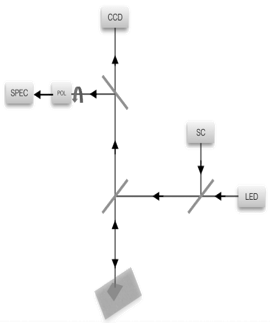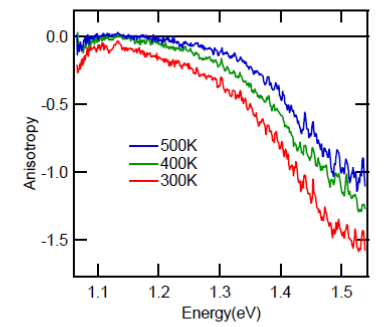2D Phase Transition in Monolayer Germanium Selenide
Student: Joseph Matson
Major Professor: Dr. Hugh Churchill
Research Area(s):
Microelectronics
Background/Relevance
- Phase-change materials are used in some memory devices, and are heavily studied for the next generation of RAM.
- Monochalcogenides have been predicted to exhibit phase change properties in their rectangular crystalline structure.
- Germanium Selenide’s phase transition is predicted to be just above room temperature for monolayer samples.
Innovation
-
To look for this phase shift we are constructing a microscope setup to be able to take differential reflectance spectroscopy readings of atomically thin materials, which we then use to observe the phase change in samples of GeSe on the order of one atom thick.
Approach
- Fabricate quality samples of thin Germanium Selenide.
- Set up a supercontinuum laser reflecting off the sample, into a rotating polarizer to measure the differential reflectance of different polarizations.
- Take this data at room temperature to verify optical anisotropy.
- Take data again at high temperature (500K) and compare levels of anisotropy, then vary temperature and repeat.

Key Results
- Successfully constructed apparatus to take differential reflectance spectroscopy readings of 2D materials.
- Measured the documented optical anisotropy at room temperature.
- Measured decreasing anisotropy with increasing temperature of one flake.

Conclusions
- Saw evidence of desired phase shift.
- Additional research should be done to solidify these results.
- Atomic force microscopy to measure thickness of sample will help to shed light on results.
- Continued research into producing thinner flakes of GeSe would greatly aid research on the material.
- This decrease in anisotropy is surprising in our 50-100 layer samples. The prediction is for monolayer and bilayer samples.
